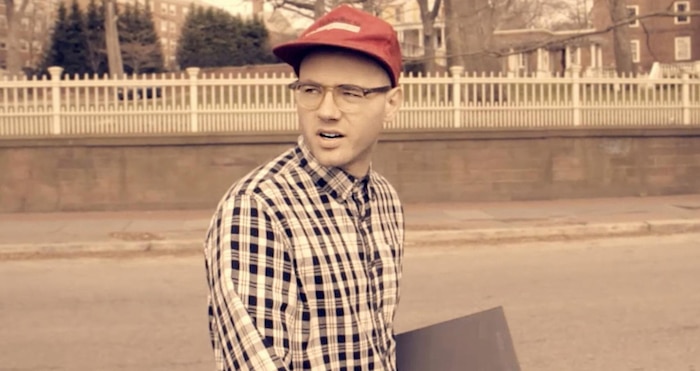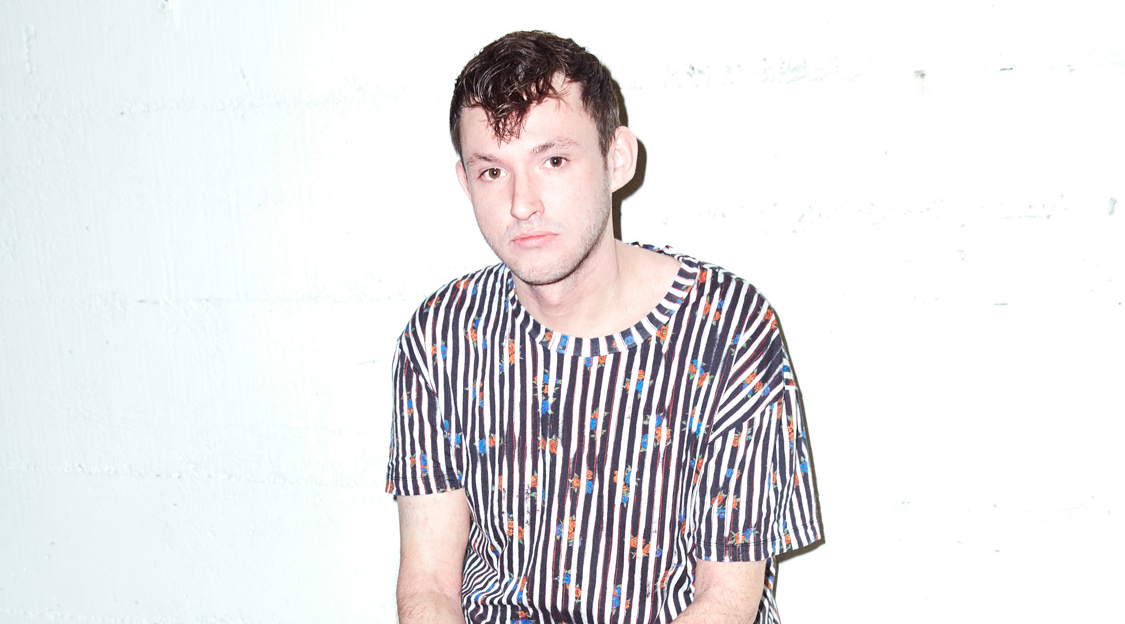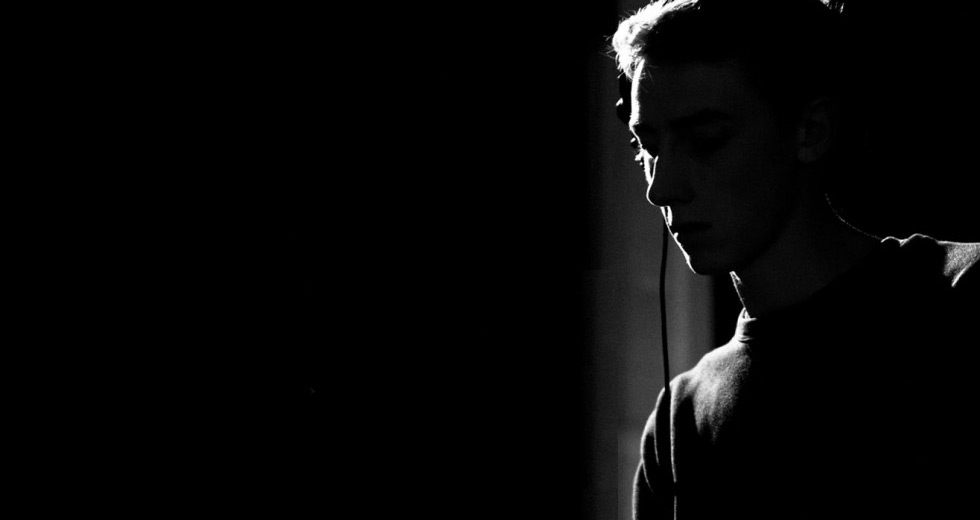Interview: The Range on the Juke/Footwork and Nu Metal Connection
The Rhode Island producer explains why Spinn & Rashad and Linkin Park might be more similar than you think

The Range is a man of precision, with a soft spot for carefully induced entropy. Raised by a music teacher, his childhood rebellion came in the form of a drum kit, and the soundtrack to what might be the ultimate low-point in the history of the Batman franchise.
Following a first musical beacon on Brooklyn’s Astro Nautico label, the man from the physics department of Brown University known as James Hinton, hit his stride when his debut 12-inch Disc was picked up by Donky Pitch. Nonfiction, The Range’s double vinyl follow-up for the Brighton-based imprint, provided an eclectic mix of hip hop, jungle and footwork patterns, over which he implants layers of diametric, R&B tinged harmonies, and hypnotic vocal cuts and samples. Besides gracing many a music scribe’s 2013 year end’s list, the album also secured him an opening slot for a North America tour with indie darlings Chvrches.
In celebration of the release of his new EP Panasonic, we spoke to the Providence, Rhode Island producer about the high art of slow build-ups, the mind-numbing effects of marching band engagements, and the possible link between Spinn & Rashad and Linkin Park’s Hybrid Theory.
It’s been half a year since the release of your debut album. Did the references people have drawn reviewing Nonfiction surprise you?
Well, as far as contemporary people, Aphex Twin and Four Tet, were most of what I saw. I’m a little surprised because to me, obviously, they are legends. Four Tet’s Rounds was one of the first electronic music records I ever listened to and I still think the production is crazy. Obviously, Aphex Twin’s Selected Ambient Works to me was crazy, too. If I’m trying to look at it objectively, I can certainly see the connection, because it’s beat music that doesn’t really want to be 100% beat music. I’m mostly surprised [though] because I really view Nonfiction as a footwork/jungle thing, but everyone was talking about Aphex Twin and Four Tet.
Given that drums was the first instrument you’ve learned, what were the first songs that you could play along to?
I only had a tom for a long time, so I could really only play “Wipeout.”
I remember that song “Wipeout,” which had this really specific drum pattern that’s just on the toms alone and I only had a tom for a long time, so I could really only play that. When I bought the drums, Smash Mouth came out with that big song “All Star.” Everyone was obsessed with it, so I needed to learn it. I just would sit on the drum set until I could play all the notes on that record. It was kind of dumb. [laughs] The only real CDs I had were Boyz II Men’s II and the Batman Forever soundtrack. It’s pretty random looking back but there are some really good songs on both of those records. That’s really what I was listening to, just trying to drum along. That was way before, like, joining jazz band or when I would start to learn new music, really.
I assume you also start with the drums when opening a new project?
I start with some sort of percussive element or at least I think about tuning something percussively. I do have that classical thing where you think about a beat in your head and you just make it happen. I guess a lot of people think it’s a very real thing that, for example, house producers will think about chord changes and all, but for me it’s all about rhythmic melodic lines moving together, sort of voices, and that’s definitely coming from learning drums.
Did you end up in your school’s marching band then?
[laughs] I had approximately three weeks of snare and then I quit because it was so embarrassing… the people are just not.... the best. A lot of really technically super-talented snare players. But the whole thing was gnarly, and so I learned some good practice techniques from that. But I quit. I couldn’t do it.
At best, it’s a technical exercise because you’re never playing any original music. Technically they’re good... they would always go compete and do really well, but it wasn’t for me. I really think it is important to be technically competent in your instrument, but the feel is not there [with that type of drumming]. It’s always staccato playing. There’s not much feel to it, because there’s no room for it. You have to project. Especially in the smaller marching bands, there are so many people. Even on the snare drum, you have to play it super loud. There is no dynamic range. That’s what fascinates me about electronic music. You can be super quiet, because you have someone locked in on headphones.
Sampling seems to be a central element for you, but it’s definitely hard to figure out what is what in the arrangement. The mixes sound really coherent.
One of my main thrusts now is getting to a more precise stage of engineering.
Yeah, you’re right, there’s always a sample. I’m really trying to integrate that into what I’ve got going on harmonically. There’s also a lot of samples that I think people don’t know are samples, so hopefully that’s a good thing. I studied mixing and engineering pretty much all four years in school. I’d majored in physics but took a ton of studio courses. Obviously you can get way better, but I kind of know where sounds are, where I need to notch and do all that stuff. I really enjoy that part. It’s a really fun scientific process that I get a lot of enjoyment out of. One of my main thrusts now is getting to that more precise stage of engineering. I like the grittiness, but I think there’s some other middle ground where you can maintain that, but have some spark and shine.
Tell me about the transition between Nonfiction and Panasonic. Is Panasonic mainly a compilation of tracks that didn’t fit the album?
None of the tracks on Panasonic were in consideration for Nonfiction, they were all composed after I completed the album tracks. Each project was started from scratch, since it’s important to me to make a cohesive release each time. The Donky Pitch guys and I had this in mind as we selected tracks, I think we had around ten options for Panasonic.
I view Panasonic as an addendum to Nonfiction. Nonfiction was the culmination of almost two years of approaching music from a somewhat maximalist place. On Panasonic I’m definitely touching on a lot of the same subject matter but paring back to attempt to let individual lines speak a little more clearly. When I finished writing for Nonfiction I knew I had a lot of room to push my musical ideas and logical reasoning for making the work that I am making, and Panasonic is a step in that process.
You definitely take your time to develop your arrangements. Would you consider yourself a patient listener?
Hm, I go back and forth. Sometimes, I’m incredibly impatient with songs until for some reason I hook onto them. Whole albums especially, in which case then I’ll be very patient with them and they’ll be with me in my iPod for six months and never, never leave. Part of the project is definitely a duality. My music has tons of micro frenetic elements, but I would argue that the macro structure is very long, and drawn out, and demands patience. A lot of the harmonies are repetitive and don’t evolve nearly as quickly as some of the other changes do.
You’re right, it’s a risk. But I think you have to take risks at some point. I think there’s enough changes and small things that’ll flip on a dime, with a vocal introduction or something. I’ve been lucky that it’s been working out so far.
Panasonic starts with “Slow Build,” can you briefly illustrate how that hypnotic/trance-like style of arranging works out for this specific tune?
On “Slow Build” all the micro changes are driven around the spine of the sampled syncopated drum loop and vocal sample. Around that I am panning two different hi-hats against each other that feel somewhat undone in solo but – because the drum loop is constant – they don’t unravel the ostinato. Then I am adding more small percussion into the introduction of the tenor line, which is put through a send with lots of effects that I’m automating slightly to give it more of a breathing feel rather than any sort of noticeable volume change. I think that’s the main reason I use the small changes, to subconsciously nudge the listener to feel the song in the time signature that I intend. It’s especially important in “Slow Build,” since I’m relying on the momentum from the first section to carry the listener through to the second half of the song, where the percussion is more subdued, to try to accentuate the two lower distorted harmonic elements.
Juke and footwork are obviously hugely influential for both Nonfiction and Panasonic. Now that’s highly repetitive music that is at the same time so bold in its functionality that it creates a sort of natural vortex...
People haven’t been making that connection so much [between me and footwork]… it’s right there, I mean the kicks alone.
Yeah. Definitely – the album project started with me wanting to explore that. I remember hearing Spinn & Rashad for the first time, and something clicked for me completely. I agree with you, I think my music just reflects how they’re always cutting right to the chase with almost no introduction and then they’ll hang out with it for a long time. Their DJ sets are very much the same. Their music too, like if you watch videos of them in the studio, they’re very much like, “quick, quick, quick,” “change, change, change.”
People haven’t been making that connection so much… it’s right there, I mean the kicks alone. Maybe I’m just being myopic about what I’m reading, because to me that’s the number one thing that should’ve been talked about regarding Nonfiction. It’s really important to me, because I do think that footwork – whether it’s the tempo or just the history behind it –just fits in this very unique pocket where R&B works, and the triplet you’ll feel underneath lets you do so much stuff. It’s perfect.
“Tricky Pose” from Panasonic is very upfront about its jungle influence. Was it important to you to make a statement here?
I think that’s just me wanting to be more clear – or at least experimenting with heightened clarity. I think a lot of what works on Nonfiction is obfuscation of known musical themes like jungle and footwork, but I think being up front about where you are coming from can also offer an interesting entry point for the listener that I can manipulate or complicate. I wanted to experiment with more of a straightforward declarative form on that song.
Is it ever tempting to break open this formula and throw in a straight 4x4 pattern?
That’s my rule about this whole project: I’m not allowed to have a 4x4 kick.
It’s funny you say that. That’s my rule about this whole project: I’m not allowed to have a 4x4 kick. [laughs] I think it’s just something I stupidly railed against when I was a kid, and now I can’t bring myself to like it. I think, or I hope, this gives my new music somewhat of a unique texture. With 4x4 rhythms, I think it’s like deliberately limiting yourself – maybe it’s easier to create, but I’m not tempted. It’s also a tough thing to do at 160, I mean the juke guys, or the footwork guys, will get there every once in a while. It’s an awkward middle tempo, where if you go a little bit faster you can get away with it, because it’s hard style or hardcore, and below you get into the house domain.
Part of the appeal of the 160 BPM tempo, I guess, is that it works so well with half-time beats...
That’s a great point. You can just build up this energy, and then you break it down. When you talk about a band like P.O.D., half time is incredibly important. Particularly when they’re going full speed and break it down, it’s a physical change. Same with R&B and hip hop. However, dance music in particular has been pretty bad about ever letting themselves do that, because you have a dance floor to consider, right? It used to be a risk, but I’ve always found it to be the most attractive thing. Now, especially 160 and 80, you can put nice 120 triplets underneath. I have a friend in New York, who pointed this out to me, like “Wow, you can even do a third time signature, because you have the half-time at 80, the full time at 160, and then this weird intermittent thing.”
So, you’re saying Korn were right when they claimed to have invented dubstep?
This is hilarious. [laughs] As far as talking about Korn, I think they’ve definitely gone off their rocker for sure. But that’s exactly what I’m talking about... there’s some serious micro structural things that are going on in those records. I know it’s dumb to talk about Linkin Park and Hybrid Theory, but if you listen to their production, there’s these little weird two bar phrases that lead into stuff, and they ditch it completely. Korn does the same thing. It definitely was just a sign of the times.
I really like to think there’s some serious risk-taking going on [with Linkin Park and Korn].
I’m not saying that they were onto something. Maybe it’s what happens when you have a producer and a hyperactive bunch of young kids. It’s interesting to think about how music’s whole verse-chorus thing was so wild, but now with dubstep we’re sort of back to where we were when they were making that music. It’s just funny to me that that was popular. I’m getting a bit of nostalgia when I listen back to some of those records. I really like to think there’s some serious risk-taking going on there that sounds somehow credible and current to me, even though it’s in this terrible, cheesy musical context. [laughs]
Did you ever plan on getting vocalists involved for Nonfiction or Panasonic?
I thought about it. I had one that went fine, but it wasn’t as exciting as I hoped it would be. I’m noticing now that, once you step into the studio with someone, it’s a very industry thing, or, at least it can feel that way. Especially when you reach out to someone over e-mail, it’s not very natural.
However, I do actually work on some collaborative projects. One of them is secret, I can’t say... Well, actually I think he leaked it anyway. [laughs] It’s with Lee Bannon, which is cool. His music is super exciting to me. We got a couple of demos which are really good. His percussion work is nuts, the way he treats percussion is very true to Source Direct and that crew. Along with the harmonies, it’s really cool. Other than that, I’m really focused on The Range for now. I think I have about three or four years just iterating on this kind of concept. I’m really happy, I don’t know how to say it. I’m not dissatisfied with Nonfiction, but I really feel like there’s so much more I have to say on that topic. Right now I’m just excited Panasonic is coming out, and there’s another EP, and another record coming hopefully early next year. I definitely have a lot more music to get out.

